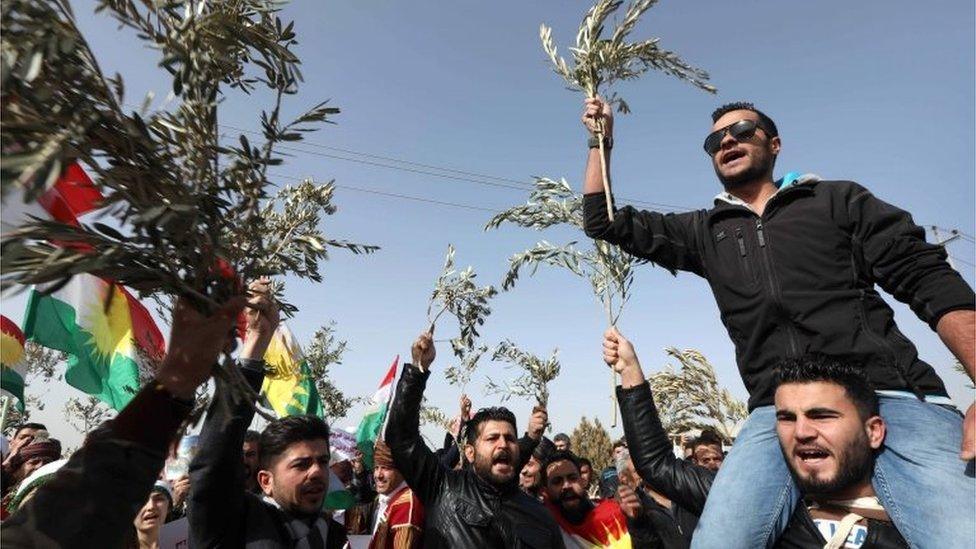Syria war: Thousands flee Eastern Ghouta as army advances
- Published
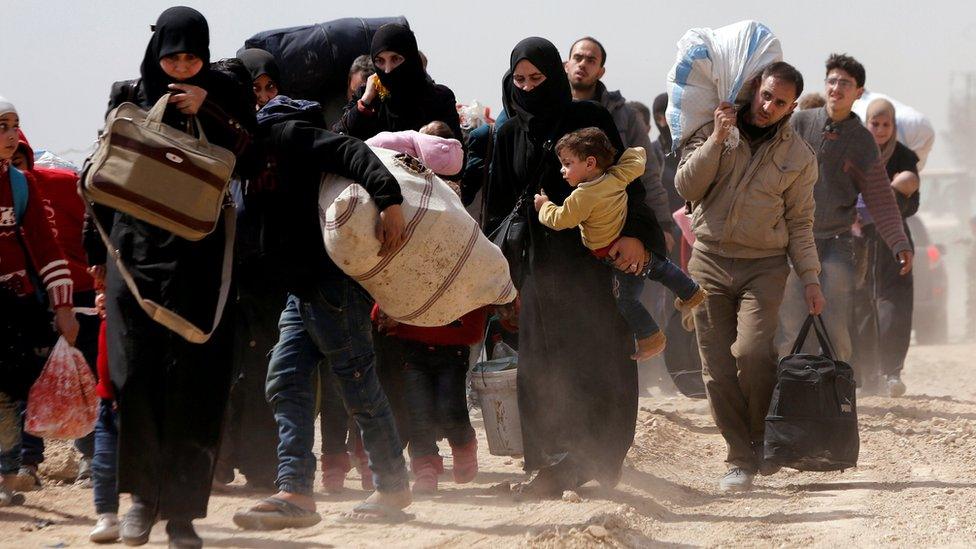
Civilians have been moving along "humanitarian corridors" declared by the government
More than 12,000 people have fled a town in the besieged rebel-held Eastern Ghouta region outside Syria's capital, Damascus, as government forces advance.
Men, women and children carrying blankets and bags were seen leaving the town of Hamouria, which has come under intense bombardment in recent days.
It is the biggest exodus from the enclave since the military stepped up an offensive to retake it last month.
At the same time, 25 lorries carrying food aid entered the town of Douma.
The International Committee of the Red Cross (ICRC) said the aid was just a fraction of what was needed in the Eastern Ghouta, where some 390,000 people are facing severe shortages of food and medical supplies.
The developments came as Syria's civil war, which ICRC president Peter Maurer said had "extracted an immensely painful human toll", entered its eighth year.
The conflict has left more than 350,000 people dead, 1.5 million others with permanent disabilities, and displaced 11 million both inside Syria and abroad.
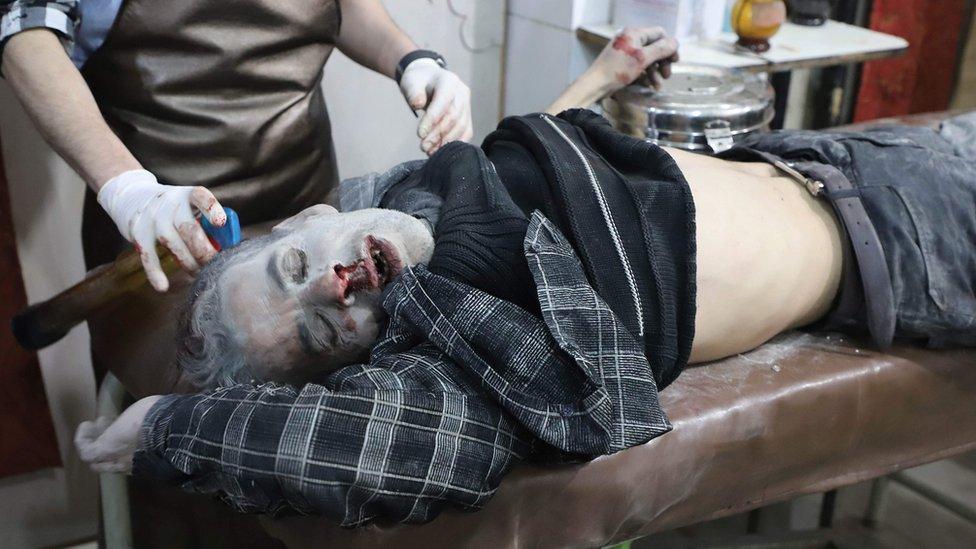
Air and artillery strikes hit Hezzeh, not far from Hamouria, on Thursday - injuring this man
More than 1,100 people have been killed since the government and its allies intensified their bombardment of the Eastern Ghouta on 18 February.
In the past week, dramatic advances by soldiers and militiamen have cut the enclave into three pockets: one in the north around Douma controlled by the rebel group Jaysh al-Islam; a second in the south around Hamouria held by Faylaq al-Rahman; and a third in the west around Harasta controlled by Ahrar al-Sham.
A UN-facilitated agreement between Jaysh al-Islam and the government's key ally Russia saw dozens of sick and wounded people evacuated along with their families from Douma during local "humanitarian pauses" on Tuesday and Wednesday.
But the government's assault on the southern pocket continued unabated.

After troops broke through rebel lines outside Hamouria on Wednesday night, the government designated a corridor through which it said civilians could leave.
On Thursday, more than 12,000 people took the opportunity to flee towards a government-held checkpoint in Adra, according to the Syrian Observatory for Human Rights, a UK-based monitoring group.
A Russian military spokesman said he expected no fewer than 13,000 to leave Hamouria, which had a population of between 31,000 and 34,000 in January.

The government said the civilians had been used as "human shields"
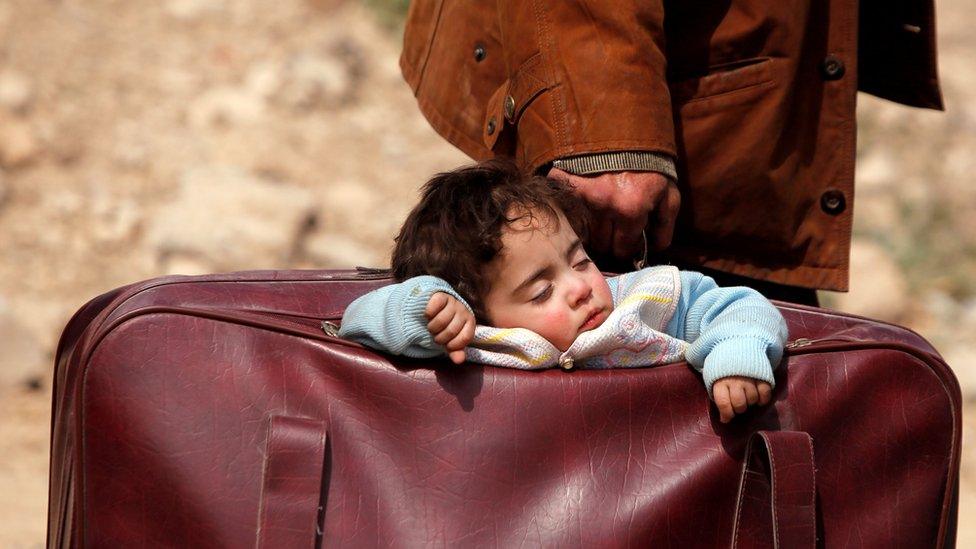
One rebel fighter said his group did not want anything other than for the civilians to be safe
"We had been trapped in the basements and did not dare come out," one man told Reuters news agency on the outskirts of Hamouria. "We could not do anything... There was no food."
A fighter with Faylaq al-Rahman said the group had withdrawn to the town of Ein Tarma, to the south-west.
"The situation is very mixed up. We didn't understand anything at all," he said. "We don't want anything other than for the civilians to be safe, and whatever happens to us happens. We don't know what will happen."
The official Sana news agency confirmed that the army had recaptured Hamouria and alleged that the civilians had been "used as human shields by terrorist organisations".
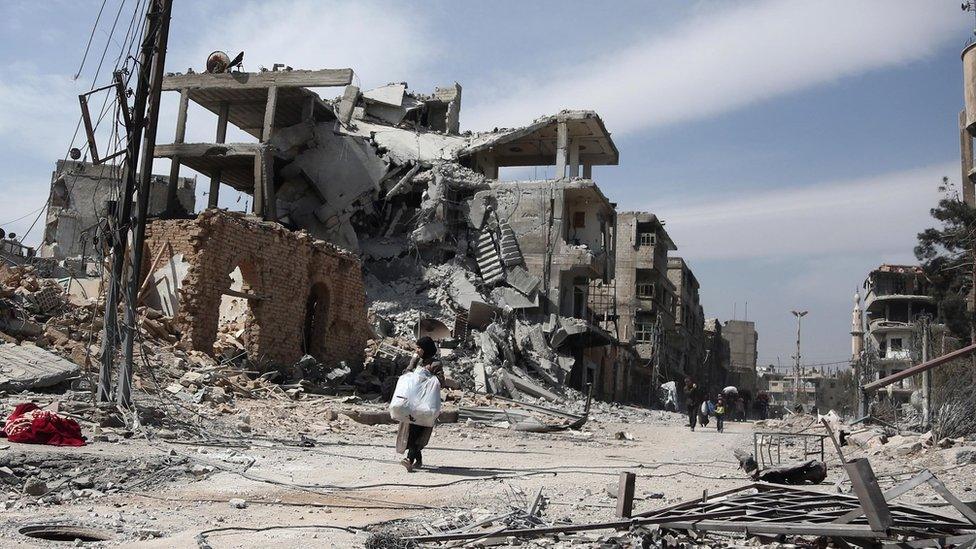
The Eastern Ghouta has been devastated by years of intense bombardment
The Syria Civil Defence - whose rescue workers are widely known as the White Helmets - said 13 civilians, including four children and two women, were killed in Hamouria on Wednesday alone as the town was hit by 65 government air strikes, 80 barrel bombs and 200 rockets.
The organisation added that one of its volunteers was killed in a "double tap" air strike on the nearby town of Hezzeh on Thursday, which targeted ambulances arriving at the scene of an earlier bombing.
The Syrian Observatory said 12 people were also killed by air strikes on the town of Zamalka on Thursday.
Meanwhile in government-controlled Damascus, one civilian was killed and 18 others wounded by shells fired by rebels based in the Eastern Ghouta, police told the Sana news agency.
- Published4 March 2018
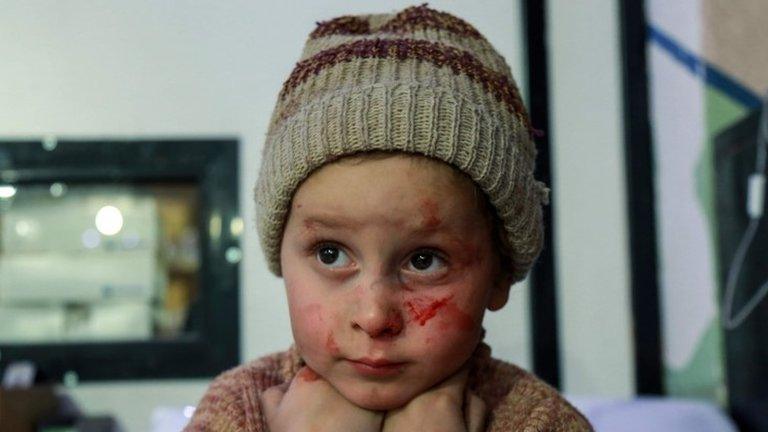
- Published29 March 2018

- Published2 May 2023
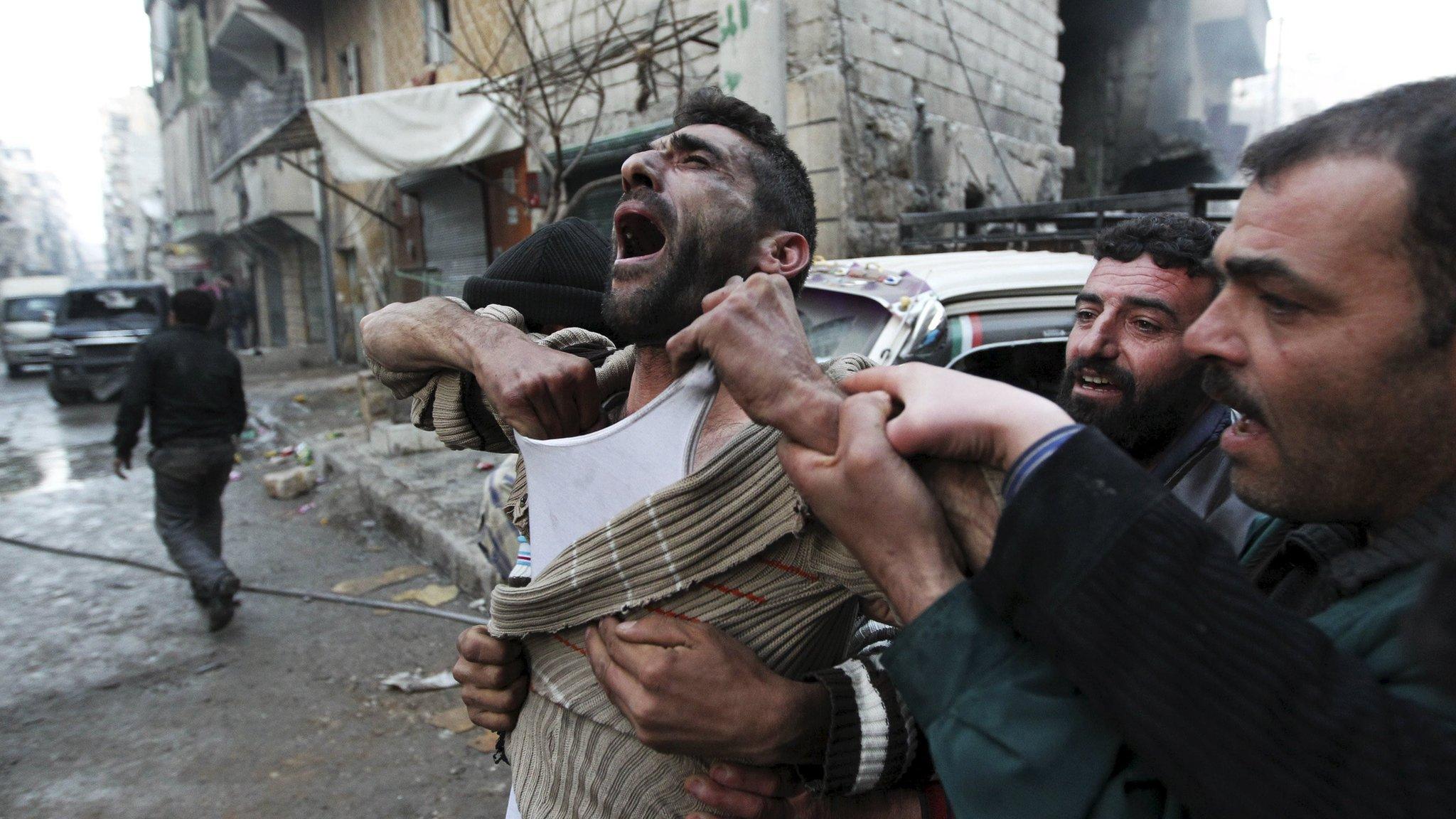
- Published23 February 2018
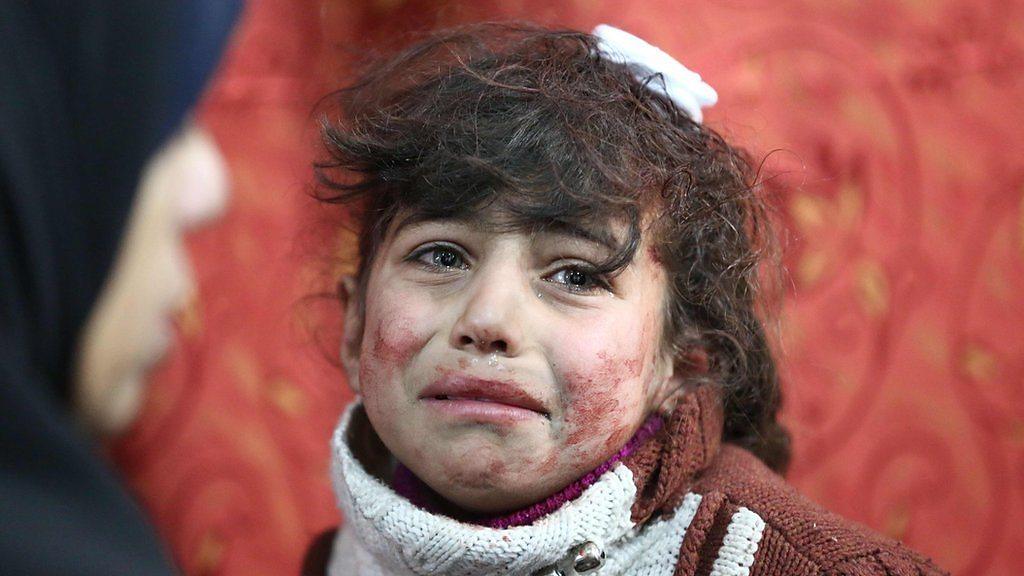
- Published22 February 2018

- Published24 January 2018
